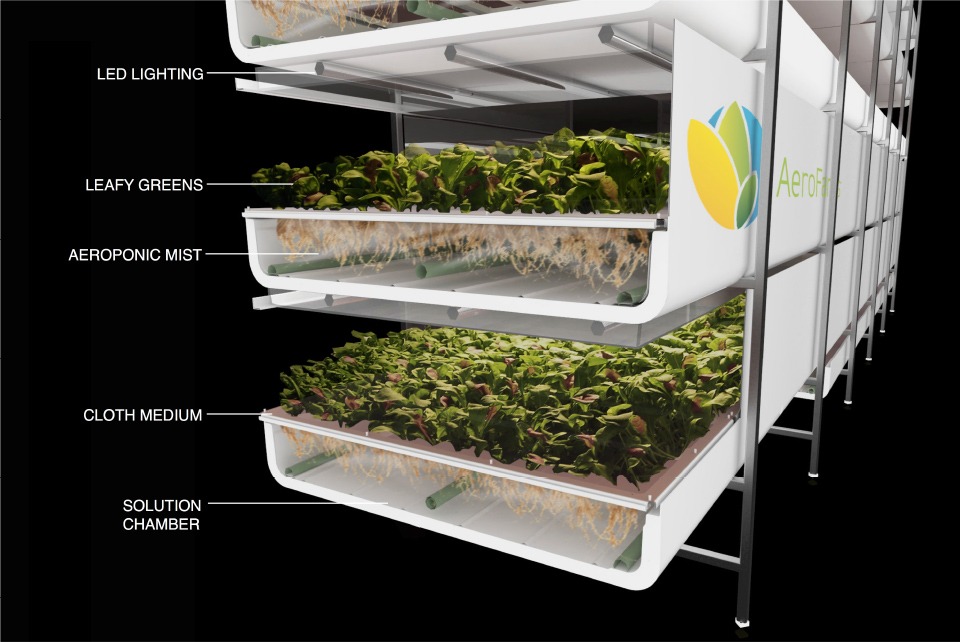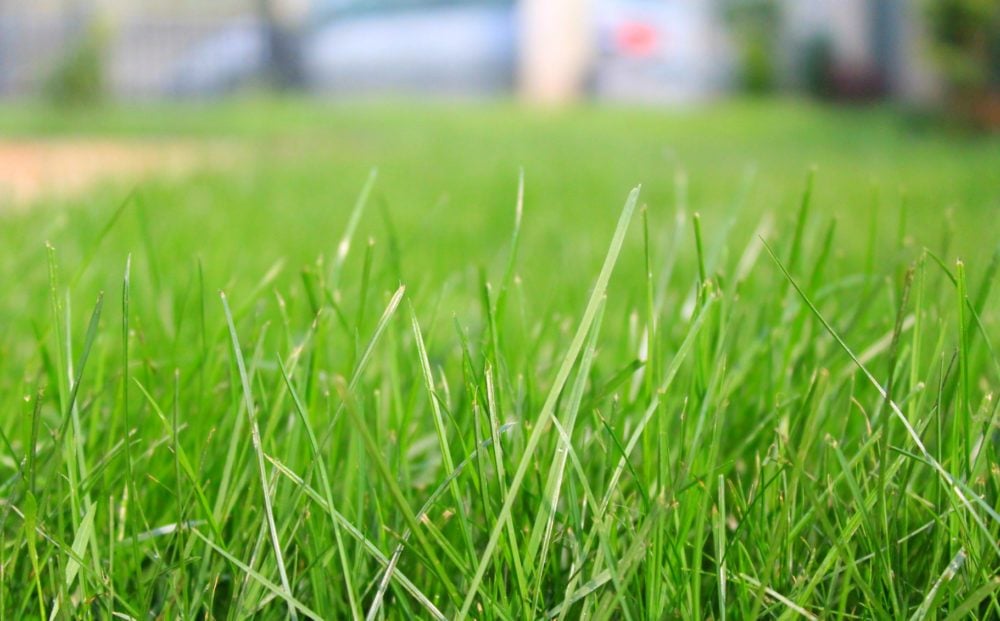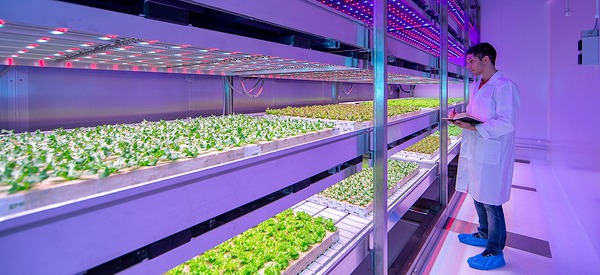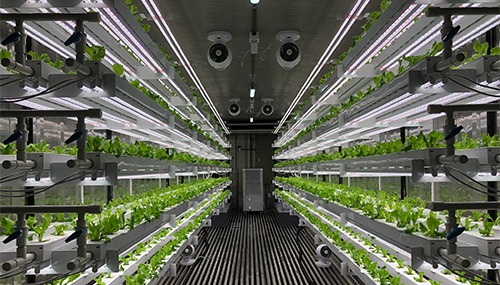Vertical Farming needs to be mainstream
In conclusion, implementing vertical farming methods and even having such systems
replace traditional farming in the long run would allow us to save more land and resources
in the process of producing crops. This, in turn would allow us to have more healthy yields
and be able to provide greater accessibility to food for most of the world’s population.
Further accentuating this idea and enhancing vertical farming systems are IoT based
solutions such as Planty Cube at the forefront of this revolution, allowing the automation
of these systems making the management of such systems easier and helping the operation of
such farms massively.
Such an Idea will undoubtedly bring promising and bountiful results in the
future and will completely reshape our idea of farming and producing food.
HEDONIST ROOTS
Until recently, the prevailing view assumed lorem ipsum was born as a nonsense text. “It's not Latin, though it
looks like it, and it actually says nothing,” Before & After magazine answered a curious reader, “Its ‘words’
loosely approximate the frequency with which letters occur in English, which is why at a glance it looks pretty
real.”
As Cicero would put it, “Um, not so fast.”
The placeholder text, beginning with the line “Lorem ipsum dolor sit amet, consectetur adipiscing elit”, looks
like Latin because in its youth, centuries ago, it was Latin.
Richard McClintock, a Latin scholar from Hampden-Sydney College, is credited with discovering the source behind
the ubiquitous filler text. In seeing a sample of lorem ipsum, his interest was piqued by consectetur—a genuine,
albeit rare, Latin word. Consulting a Latin dictionary led McClintock to a passage from De Finibus Bonorum et
Malorum (“On the Extremes of Good and Evil”), a first-century B.C. text from the Roman philosopher Cicero.
Core idea of Vertical Farming
Vertical farming is a new method of cultivating crops born as most innovations
are – out of necessity. As the population of humans grows further every day,
expected to grow and eventually plateau at the staggeringly large figure of 9 Billion,
A major challenge this presents us with is the sustainable management of resources,
especially crops and food. Conventional farming methods are not very efficient as these
methods require vast amounts of arable land which is running low at an ever increasing rate,
and also huge volumes of water are used up for watering plants out of which only a small
percent of it is actually necessary.
As Cicero would put it, “Um, not so fast.”
The placeholder text, beginning with the line “Lorem ipsum dolor sit amet, consectetur adipiscing elit”, looks
like Latin because in its youth, centuries ago, it was Latin.
Richard McClintock, a Latin scholar from Hampden-Sydney College, is credited with discovering the source behind
the ubiquitous filler text. In seeing a sample of lorem ipsum, his interest was piqued by consectetur—a genuine,
albeit rare, Latin word. Consulting a Latin dictionary led McClintock to a passage from De Finibus Bonorum et
Malorum (“On the Extremes of Good and Evil”), a first-century B.C. text from the Roman philosopher Cicero.
Vertical Farming and How it can lead to future sustainable development
Vertical farming reduces natural resource consumption
Planty Cube is a revolutionary step forward for the novel and innovative idea that is vertical farming and can
even be considered the next evolutionary step for farming systems in general. This ingenious application of
embedded systems is the epitome of the pervasiveness of IoT applications in modern industries. This blog aims to
explore this idea of vertical farming, the necessity for its implementation and how it can be enhanced using IoT
highlighted by this example system – Planty Cube.

Plus, all the deforestation, overfishing and pollution caused by meat and fish industries limits the overall
capacity of the Earth to produce food.
If more farmland was used to grow crops for humans, then more people could be fed at less of an expense to the
planet.
This understanding is becoming more urgent as the global population is expected to hit or surpass 9.1 billion by
2050. There's simply not enough land on the planet to raise enough meat to feed everyone the average American
diet. Nor can Earth cope with the pollution this would cause.
It employs novel IoT solutions
The implementation of IoT will allow for vertical farms to be more modular, having settings for different breeds
of plants to be grown in such systems and in addition to this the computerization of such systems will allow for
the monitoring of the health of the crops being grown.

As such, this data can be collected within a database and be used to formulate the appropriate settings required
for the plant to thrive. The system would be able to control the lighting provided to the crops, the irrigation,
humidity and temperature to optimally suit the plant in question. This system will allow for the efficient
growth of crops and would be able to decide the right growing conditions for the crops in a smart manner,
serving as a fully automated sustainable farming system which is easy to maintain.

Vertical farming reduces energy consumption
Raising livestock costs a lot of energy. This is due to a wide range of factors including: it takes a long time
to raise animals; they consume a lot of food that was cultivated on land that could have been put to other use;
meat products need to be shipped and refrigerated; and meat takes a long time to process from slaughterhouse to
kitchen table.

Plant-based proteins, meanwhile, can be raised with 8 times less energy costs than meat-based proteins.

Challenges that the system faces
The most common critique I’ve heard leveled against veganism is that it forces you to retire your taste buds and
your free time: because meat is superior in taste and is easier to make.
While taste is subjective and a lot of people “need” their chicken wings on Sunday, I’d argue that the aversion
to veganism is based more on cultural education than on actual comparisons.

While, it is not difficult to understand the numerous advantages that such vertical farming systems can have,
there are also a few apprehensible issues in these systems which must be addressed. Integrating something like
this with IoT will lead to us having greater dependence on networks and technology which could lead to
large-scale issues when systems like this fail or experience bugs of some sort. In addition to this the added
complexities involved would result in a greater need for maintenance.

You’ll learn a lot about the methods of cooking when you have a counter full of vegetables in front of
you.
How far the Technology has come
Despite the aforementioned issues mentioned these systems’ benefits for outweigh the negatives and as such this
system has already seen a fair amount of success. For instance, aerofarms has repurposed a steel mill to serve
the purpose of vertical farming as its largest iteration in the world and now harvest up to two million pounds
of crops each year.
x

TThis is a prime example of how this idea can be brought into the mainstream and in the future we might be able
to see even more companies adopt this style of producing crops, perhaps with more enhanced IoT systems to assist
the farm. And in the near future it may not be too absurd to see entire skyscrapers dedicated to this ambitious
and ingenious purpose.